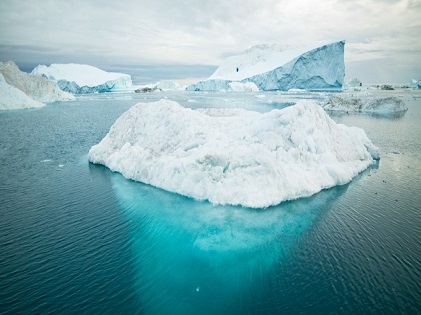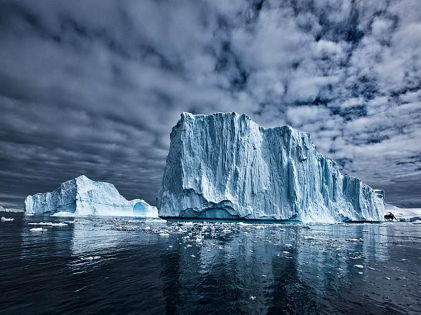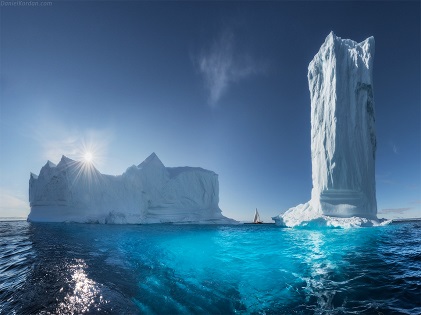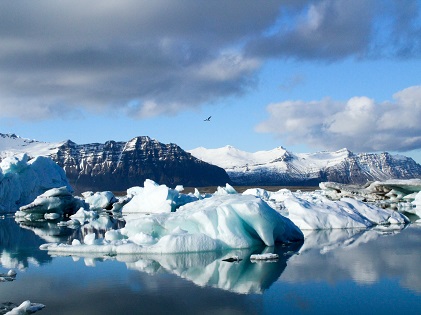
Antartica’s Biggest Glaciers Are Melting: Here’s What You Need to Know About It!

 While global warming has been a serious and growing concern for the planet, many of them are still in denial of it. Some people believe that it is just propaganda or a fad that people keep talking about for their gains.
While global warming has been a serious and growing concern for the planet, many of them are still in denial of it. Some people believe that it is just propaganda or a fad that people keep talking about for their gains.
However, a recent discovery is so alarming that everyone would have to take global warming seriously and try saving the planet.
The Melting Ice Sheets
Two recent satellite images show that Earth’s glaciers and the ice sheets are melting faster than ever! Earth is made of 71% of water. However, not everything is fit for human consumption because over 96.5 percent of this water is in the oceans, making it unsuitable for consumption.
Of the consumable water, 99% of the Earth’s freshwater ice sheets and glaciers are in Antarctica and Greenland. While it is normal for the ice sheets to melt with the changing seasons, this time around, the pace is frightening. While the glacier melt already contributes to 5% of global sea-level rise, the snow caps’ pace is melting now the sea level could rise drastically. And that is no good news to mankind.
Pine Island and Thwaites Glaciers Destabilize
 Well, these are two major glaciers that are melting fast. The Pine Island Glacier is one of the largest ice streams in West Antarctica. This is also the fastest melting ice sheet responsible for over 25% of the Antarctican region’s ice loss.
Well, these are two major glaciers that are melting fast. The Pine Island Glacier is one of the largest ice streams in West Antarctica. This is also the fastest melting ice sheet responsible for over 25% of the Antarctican region’s ice loss.
The melting stream from these ice sheets flow into the northwestern and southern side of the Hudson Mountains. And then go into Pine Island Bay and then into Antarctica’s Amundsen Sea. Spreading over an area of 160s miles in length, it’s total catchment area spreads over an area of 68,000 square miles.
The Thwaites Glacier is also called the Doomsday Glacier. It is unusually broad, vast, and spreads over the Antarctic glacier, which flows into the Pine Island Bay, and then into the regions of Amundsen Sea, east of Mount Murphy, on the Walgreen Coast of Marie Byrd Land. Its surface speed goes over 2 kilometers every year, and it is nearing the grounding line.
If you wonder why the Glacier gets the name of Doomsday Glacier, it is because of the damage it could wreck if it were to melt. When the Thwaites Glacier melts, it will increase the sea level by 65 centimeters and cascade half of the Western Antarctican region, leading to a two to three-meter rise in the sea level.
How Much Ice Has Melted So Far?
 Recent research shows that since the year 1994, the Antarctic ice caps have seen a staggering 28 trillion ice tones. And since then added to a three feet dramatic rise in the possible sea level. Scientists from the United Nation’s Intergovernmental Panel on Climate Change state that this matches the worst-case scenario they predicted a few years ago.
Recent research shows that since the year 1994, the Antarctic ice caps have seen a staggering 28 trillion ice tones. And since then added to a three feet dramatic rise in the possible sea level. Scientists from the United Nation’s Intergovernmental Panel on Climate Change state that this matches the worst-case scenario they predicted a few years ago.
And since then, the sea levels are rising at a range of 3.5 millimeters per year. The Thwaites Glacier is contributing to an increase in the sea level by around four to five percent. Well, that is scary and could spell doom to the whole world. That’s because it would bring along numerous destructions like erosion, flooding of the wetlands, contamination of the aquifer and agricultural soil with salt, and habitat loss for plants, birds, and fishes.
What’s the Impact It Could Have?
 According to research, the melting Greenland glaciers would expose over 400 million people. And this could happen most likely by the end of this century. Other studies suggest that there could be a further disintegration and calving in the months to come. Calving is when a large ice sheet breaks off, leading to an unprecedented retreat of the ice shelf.
According to research, the melting Greenland glaciers would expose over 400 million people. And this could happen most likely by the end of this century. Other studies suggest that there could be a further disintegration and calving in the months to come. Calving is when a large ice sheet breaks off, leading to an unprecedented retreat of the ice shelf.
The shear zones or areas which see a severe deformation of the melting ice sheets have increased since 1992 by 2020. And the fastest melting period has been in the years between 2010 to 2020. However, the relief is that melting glaciers could slow down in the years to come. The melting would prevent a major collapse as the surface-level melting is very little. However, it makes the shear zones vulnerable to an enhanced mass loss and a grounding line retreat.
Scientists and environmentalists believe that nations have to start acting soon to stop the damage that global warming is causing. And remember, every simple act that we make as an individual will make a difference to the planet. So, start acting today and do your bit as a responsible citizen of this planet!
More in Business & Investments
-
`
The Sky’s the Limit: Qantas Aims for Ultra-Long-Haul Records
Long-haul flights are making a grand return, signaling the optimism among airlines that international travel is on the rebound post the...
December 2, 2023 -
`
WWE SmackDown to Make a Comeback on USA Network in 2024
In a surprising twist, WWE’s Friday night staple, “SmackDown,” is bidding farewell to Fox and heading back to its old stomping...
November 24, 2023 -
`
Why Women Face Higher Out-of-Pocket Health Expenses
In healthcare, disparities persist, and a recent report from Deloitte underscores a significant financial gap between working women and men in...
November 18, 2023 -
`
Elon Musk vs Bill Gates: The Clash of Titans
In the realm of the world’s wealthiest individuals, a simmering rivalry has been captivating public attention. It’s not a clash of...
November 7, 2023 -
`
The Power Of Disconnecting
In our digitally driven age, where smartphones, tablets, and laptops have become extensions of ourselves, disconnecting might seem daunting. However, the...
October 31, 2023 -
`
JCPenney’s Bankruptcy: The End of an Era
JCPenney filed for bankruptcy in a move echoing the struggles of many retailers in the wake of the COVID-19 pandemic. This...
October 26, 2023 -
`
Reasons Why You Need a Financial Plan
Financial planning is not just for the wealthy or those nearing retirement. It’s a crucial tool for anyone seeking financial security...
October 19, 2023 -
`
How Brad Pitt Spends His Millions All Over the World
Brad Pitt, the charismatic Hollywood superstar, has left an indelible mark on the silver screen and made an impact in the...
October 10, 2023 -
`
Gen Z’s Posh Palate: The Unexpected Rise of Caviar Culture
Amid the backdrop of a digital era buzzing with viral dances, e-sports, and niche memes, there emerges a peculiar plot twist:...
October 7, 2023















You must be logged in to post a comment Login